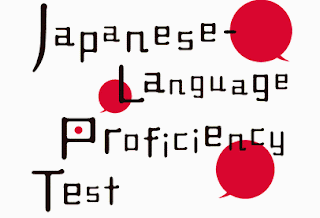What does JLPT stands for? JLPT stands for Japanese Language Proficiency Test or in Japanese called Nihongo Nouryoku Shiken (日本語能力試験), A place for everyone (particularly foreigners) to test her/his Japanese language skill. Hmm maybe JLPT is like TOEFL in English.
After revised in 2010, now there are 5 levels in JLPT from N5 the easiest level, N4, N4, N3, N2 and N1 the hardest level. And This is the standard skill that Japanese learners must have for each level:
Level N5 (Beginner)
Kanji: 100Vocabulary: 800
Study Hours: Around 100 ~ 200 Hours
Able to understand standard Japanese sentences which are written in Hiragana or simple Kanji and comprehends patterned conversations, consisting primarily of phrases and simple sentences, in daily life, typical classroom situations, and other familiar settings; can glean needed information from spoken language provided it is adapted for a nonnative speaker, spoken slowly, and can be repeated.
Level N4 (Basic)
Kanji: 300Vocabulary: 1500
Study Hours: around 250 ~ 400 hours of study
Capable of reading and understanding written materials intended for nonnative speakers on familiar topics and Comprehends conversations encountered in daily life and can generally follow the flow of remarks, provided they are spoken slowly and can be repeated.
Level N3 (Lower Intermediate)
Kanji: 650Vocabulary: 3750
Study Hours: around 500 ~ 750 hours
Able to read and understand materials written for native speakers only if they are rewritten for nonnative speakers with simplified vocabulary and kanji. Can derive a limited amount of information from article titles in newspapers intended for native speakers. Can glean necessary information from writting materials encountered in daily life with the aid of a dictionary, if sufficient time is provided and comprehends coherent conversations spoken at more-or-less natural speed in everyday life and in some settings seldom encountered in daily life; can generally follow a particular flow of remarks as well as relationships among people discussed.
Level N2 (Intermediate)
Kanji: 1000Vocabulary: 6000
Study Hours: around 1400 ~ 2000 hours of study
Capable of reading and understanding general information manuals and other basic written materials intended for native speakers. Can read more specialized materials with the aid of a dictionary. Reads simply written materials on general topics and can both follow the progression of ideas and understand nuances and comprehends coherent conversations, news reports, and the like, spoken at nearly natural speed,
in everyday life and various other settings. Can follow the flow of remarks and comprehend the content; understands relationships among people discussed and can grasp essential points.
Level N1 (Advanced)
Kanji : 2000Vocabulary: 10000
Study Hours: around 3100 ~ 4500 hours
Able to read logically constructed writing, such as newspaper editorials intended for native speakers and can
follow the reasoning; reads highly abstract writing and can comprehend configurations of abstract concepts. Reads deep-content materials in a broad range of subjects and can comprehend both the progression of ideas and specific nuances and comprehends coherent conversations, news reports, lectures,
and the like, spoken at natural speed in a broad variety of settings; can follow the progression of ideas and
comprehend the content. Understands relationships among people discussed, logical structures, and other such details, and can grasp the essential points.
Wow, I think very difficult to reach Level N1(T_T)/~~~, even Japanese people cannot pass this level easily. But we must be confident and believe if we fight and keep learning we will reach and pass JLPT level N1 sometime^^, so ganbarou!.
And there are 4 test sections in JLPT:
Able to read logically constructed writing, such as newspaper editorials intended for native speakers and can
follow the reasoning; reads highly abstract writing and can comprehend configurations of abstract concepts. Reads deep-content materials in a broad range of subjects and can comprehend both the progression of ideas and specific nuances and comprehends coherent conversations, news reports, lectures,
and the like, spoken at natural speed in a broad variety of settings; can follow the progression of ideas and
comprehend the content. Understands relationships among people discussed, logical structures, and other such details, and can grasp the essential points.
Wow, I think very difficult to reach Level N1(T_T)/~~~, even Japanese people cannot pass this level easily. But we must be confident and believe if we fight and keep learning we will reach and pass JLPT level N1 sometime^^, so ganbarou!.
And there are 4 test sections in JLPT:
- 文字語意(mojigoi): test the ability of participants in understanding the vocabulary in Japanese and Kanji
- 聴解(choukai): test the ability of participants in listening and understanding the dialogue in Japanese
- 読解(dokkai): test the ability of participants in understanding the articles/reading materials in Japanese
- 文法(bunpou): test the ability of participants in understanding Japanese grammars
Ok, that was some information about JLPT (Japanese Language Proficiency Test)^^ And now we all know what the JLPT is, huh?, Ok, I hope we all can pass all level of JLPT sometime^^.

0 Response to "Some Information About JLPT (Japanese Language Proficiency Test) 日本語能力試験"
Post a Comment
コメントを忘れないでね^^、don't forget to leave a comment^^)/